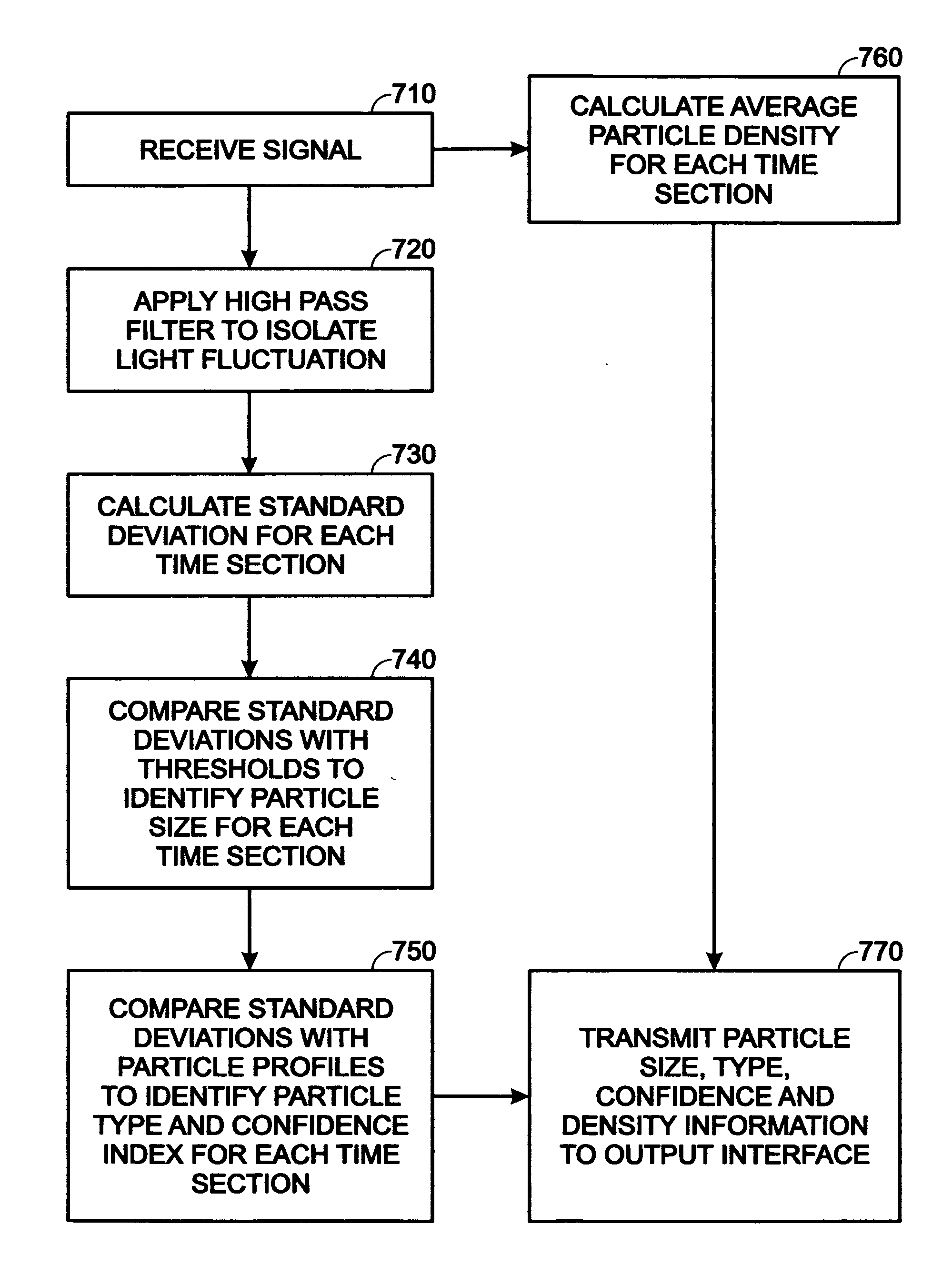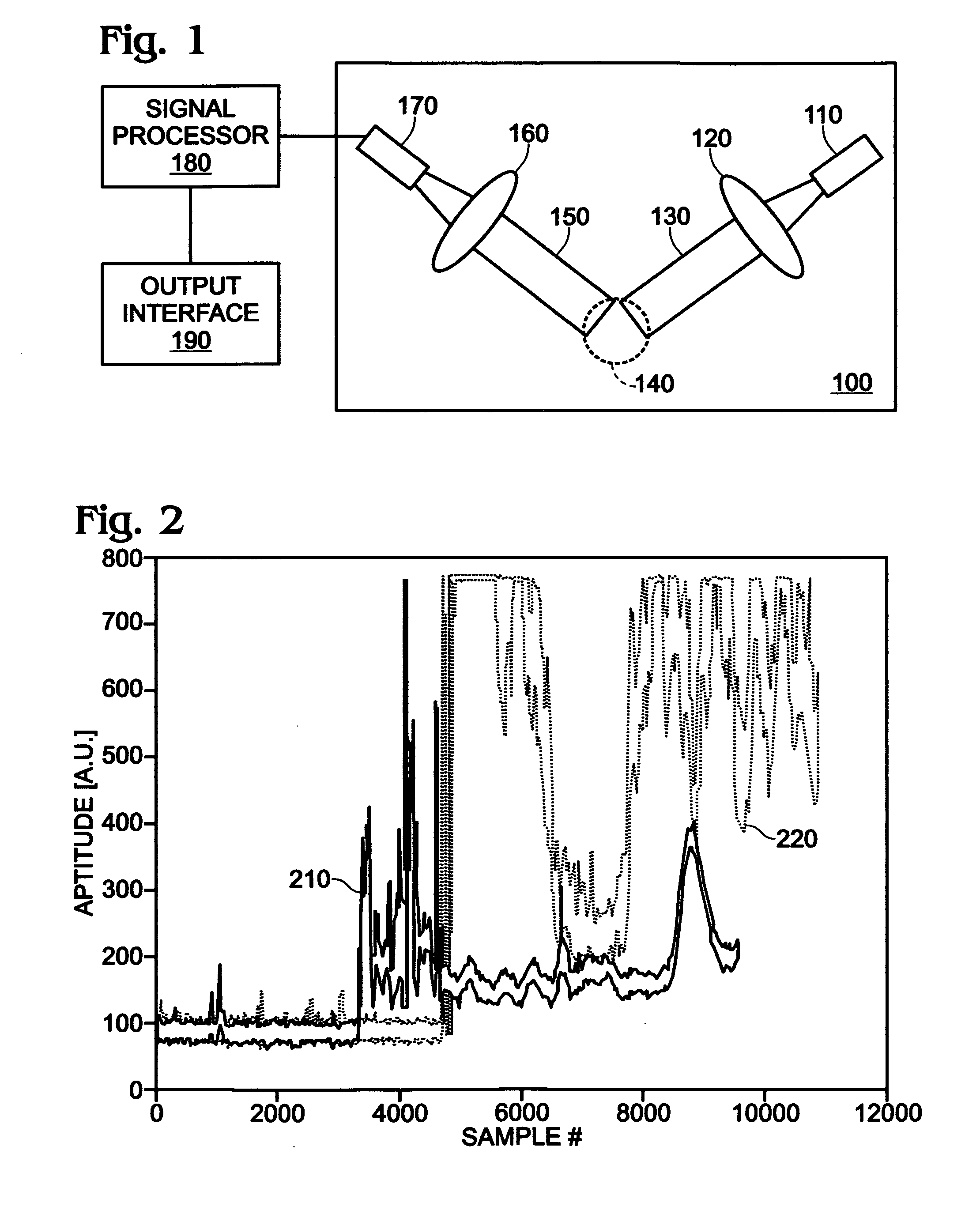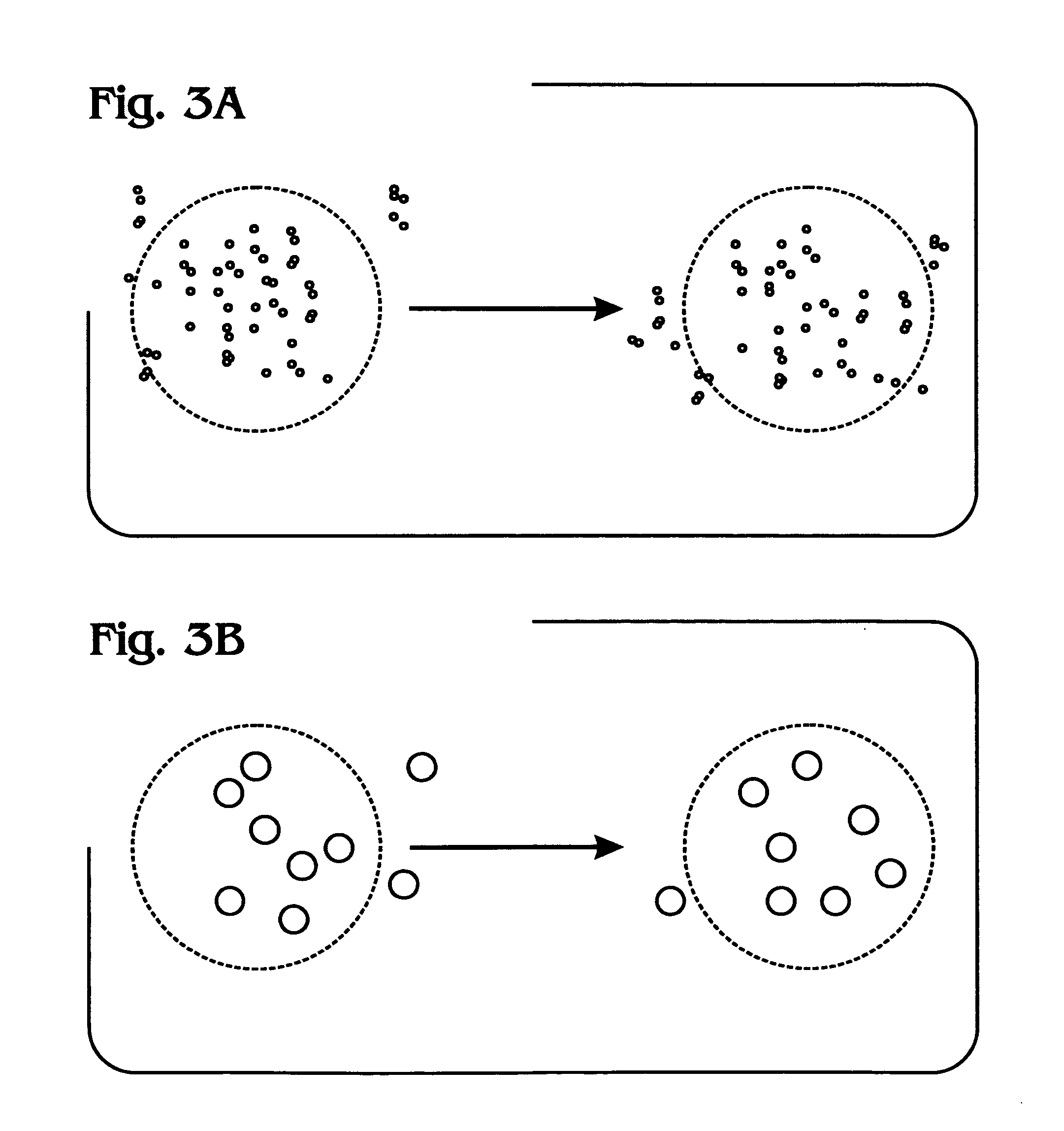Method and systems for particle characteruzation using optical sensor output signal fluctuation
- Summary
- Abstract
- Description
- Claims
- Application Information
AI Technical Summary
Benefits of technology
Problems solved by technology
Method used
Image
Examples
Embodiment Construction
[0038]FIG. 1 shows an airborne particle detection and characterization system in some embodiments of the invention. The system may be integrated into a portable monitor worn by a patient, for example. The system includes a signal processor 180 communicatively coupled between an optical sensor 100 and an output interface 190. Optical sensor 100 has a light source 110, such as a light emitting diode (LED), that provides incident light to a first lens 120. First lens 120 collimates the incident light to produce collimated light 130. The collimated light 130 is scattered by particles in a light scattering region 140 to produce scattered light 150 that is indicative of particle presence in light scattering region 140. The scattered light 150 passes through a second lens 160 and is recorded by an optical detector 170 that converts the recorded light into a voltage. Optical detector 170 transmits to signal processor 180 an output signal that is proportional to the voltage. After performing...
PUM
 Login to view more
Login to view more Abstract
Description
Claims
Application Information
 Login to view more
Login to view more - R&D Engineer
- R&D Manager
- IP Professional
- Industry Leading Data Capabilities
- Powerful AI technology
- Patent DNA Extraction
Browse by: Latest US Patents, China's latest patents, Technical Efficacy Thesaurus, Application Domain, Technology Topic.
© 2024 PatSnap. All rights reserved.Legal|Privacy policy|Modern Slavery Act Transparency Statement|Sitemap



